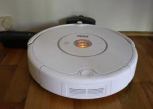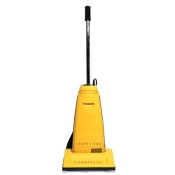As I go about my daily carpet cleaning jobs there are many questions that I get asked with a fair amount of regularity. Today I’m going to address the question of post cleaning stain protectors. You chose your new carpet carefully, did your due diligence in selecting a cleaner, and now after he finishes the job the question of stain protector comes up. In a perfect world I would say, you did your homework in selecting a reputable cleaner, so going on his recommendation would be a safe bet. Well as we all know the world is not always perfect.
Even some of the best cleaners out there often overlook some of the more subtle tools of our trade. I recently heard a manufacture rep. say that only about 50% of cleaners offer stain protectors. My own experience tells me that of that 50%, only about half of them apply the products properly. When not applied properly the products don’t work, and you the customer, have wasted your money. Now that said, let’s talk about the products that are correctly applied.
Most of you have heard of the big brand names such as Scotchgard, Teflon, Stain Shield etc. These are good products that can be valuable tools in helping to keep your freshly cleaned carpet looking clean. Just as important though, they can keep that occasional red wine, coffee, juice etc. spill from leaving permanent stains. Thus when properly applied, I highly recommend protectors in your high traffic areas.
That may be plenty of information for most people, but I know how much some of you like to know how things work so here is a simple explanation of the intricacies of stain protectors. Stain protectors are primarily designed to work on nylon carpet, but using them on any other fabric is a perfectly safe and acceptable thing to do.
The majority of stain protectors are all Fluorochemicals. When applied properly Fluorchemicles can repel both water and oil based soils which can be very beneficial to the life and appearance of your carpet.
Fluorochemical protectors work by lowering the surface energy or tension of the carpet or furniture. Surface energy or tension is the attraction of molecules in a water-based solution. Think of putting a drop of water on a non-porous counter top, the reason it beads up is the result of low surface tension. So by lowering the surface tension of carpet, the result is similar, the spill beads up and doesn’t soak into the fabric.
Some protectors also contain what are called acid dye blockers. These have all the advantages of fluorochenicals plus they can repel those Kool-Aid and food dye stains. If you were to take one individual strand of nylon that makes up carpet an look at it under a microscope you would see what are called the dye sites (kind of like pores). Acid dye blockers get in and fill / clog those sites creating a negative charge at the fibers surface, thus blocking the food dyes from attaching to the fiber (food dyes are also negative). As you can see, making carpet stain resistant is all about chemistry and it can be a very effective tool in extending the life of your carpet.
We often only think of using protectors on carpet, but don’t forget that they can also be used just as effectively on upholstery.
Thanks for reading and next time we’ll talk about those recurring spots.
Related articles
- What about carpet stains? (firstchoicecleaning.wordpress.com)
- Remove Pet Stains From Carpet (genesis950.wordpress.com)



 Posted by Mike Az
Posted by Mike Az 




